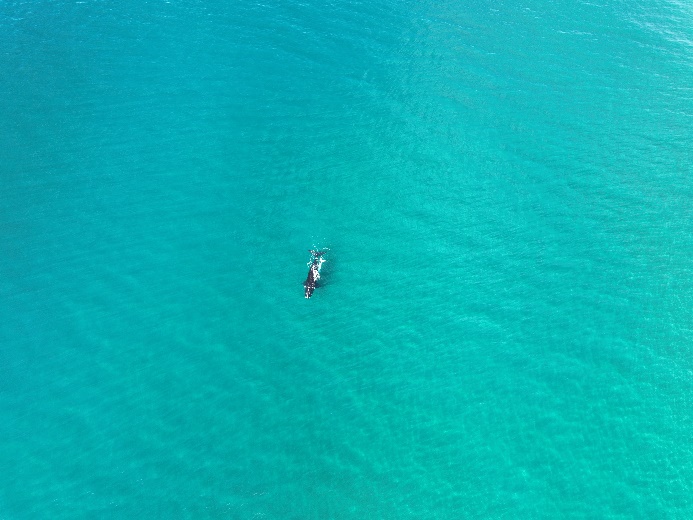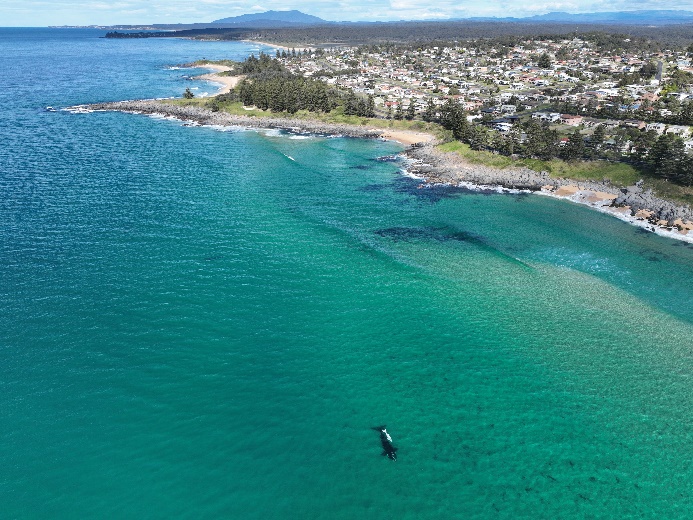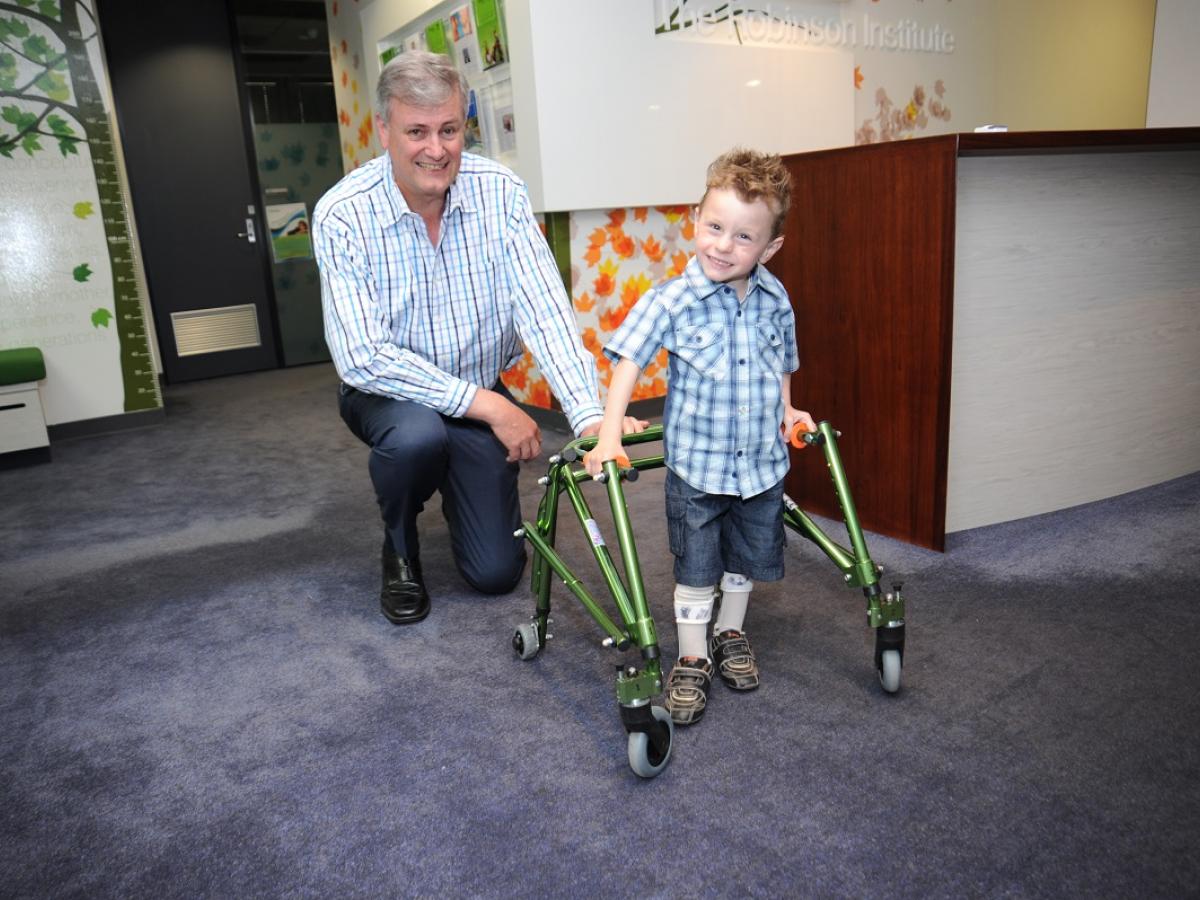Four pairs of mother-and-calf southern right whales have been seen in NSW waters so far this winter – but one pair is slapping up a frenzy on social media.
The calf in this pair is mostly white, as seen in vision taken from high above, reminding people of the famous humpback Migaloo.
However, National Parks and Wildlife Service (NPWS) Marine Wildlife Team Project Officer Andrew Marshall said while the sighting was exciting, whale fans needed to stay well clear of the family.
It is illegal to approach any closer than 300 metres when a calf is present, if you are on a vessel, including surfboards, paddleboards and kayaks. Drones must legally stay at least 100 metres above the animals.
“The calf appears to be white but is actually brindle,” Mr Marshall said.
“Its white areas will darken to grey as it ages – it’s one of around 1-in-30 southern right whale calves born with brindle colouring.
“This is a rare event to see a virtually white brindle calf, as southern right whales are mostly very dark, although some have splashes of white called a blaze.
“If you look closely at the video you can also see pale grey areas on the mother, who also carries the recessive brindle gene,” he said.
The vision was captured off the south coast recently by accredited drone volunteer, Maree Jackson, from the NSW Government’s Right Whale ID research program to monitor the whales.
Her drone approached at 100 metres then used a 7x optical zoom to capture the stunning close-ups.
“Curious onlookers are reminded to keep back and give the nursing mother and calf space to rest undisturbed,” Mr Marshall said.
“A calf needs up to 300 litres of milk a day to gain the weight needed for the 5000-kilometre swim back down to Antarctic waters in the coming month, so both the mother and calf need to be left alone so they can rest and feel safe.”
Now in its second year, the Right Whale ID Program uses highly trained volunteer drone operators to photograph the unique white head-markings on each southern right whale.
The Right Whale ID program operates as part of the Marine Estate Management Strategy, working with volunteer drone operators to collect important information about southern right whales to assist in their management, protection and conservation.
Please credit vision to Right Whale ID program volunteer drone operator Maree Jackson
Image taken from 100 metres with no zoom
Image taken from 100 metres with 7x optical zoom










